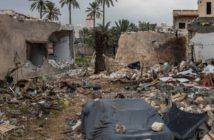
By Simon Williams
This has been a decade of extremes for the Middle East and North Africa — extreme wealth for the Gulf, but extreme instability for the Arab Spring nations and their neighbours. However, we think the drivers of economic performance will change for the second half of the decade.
The challenges will be pronounced as the Arab Spring states work through the enormous costs imposed by the 2011 revolutions. But with the support of allies overseas, and with more effective government in place, 2015 could be the year when the decline in fortunes slowly starts to reverse.
For Egypt, we are less convinced than many of a 2014 turnaround, despite aid flows, a security crackdown and early indicators of better economic performance: anti-regime protests, sporadic violence and a gaping divide in public opinion persist. However, 2015 offers hope. Both Egypt and Tunisia plan to have permanent elected parliaments, governments and presidents in place by the end of this year, paving the way for a normalisation of financial conditions, a resumption of economic activity and gradual recoveries.
It is far more difficult to construct a positive outlook for states such as Iraq and Syria, which have become entrenched in sectarian violence, or for those such as Lebanon whose fortunes have become hostage to events across their borders. But evidence of a thaw in relations between the West and Iran for the first time since the 1979 Iranian revolution offers some prospect for an easing of sectarian tensions.
But if recent years have been characterised by instability for Egypt and its neighbours, for the Gulf, they have been defined by abundance.
It has been a long cycle. Since oil prices began rising in 2003, the wealth commanded by the Gulf’s major commodity exporters has soared. We estimate the GCC states’ GDP reached $1,700bn at the end of last year — a fivefold increase in a decade. Dollar-denominated GDP increased by an average of 17% every year, apart from during the global financial crisis in 2009. Per capita income has more than doubled since 2003 to $35,000, placing the GCC on a par with the wealthy states of the West.
But while the drivers of the cycle have been powerful, they are also finite. Initially the surge in oil earnings set the rhythm for growth. Then, as oil prices stabilised at around $100 a barrel, domestic demand was driven by the rapid increase in domestic absorption of petroleum wealth through sharply rising oil-funded public spending. However, as budget surpluses give way to deficit, that phase too may end.
The change in cycle will not be abrupt. The region’s oil-exporting states have generated cumulative budget surpluses of $1,200bn over the past decade, allowing them to pay down debt and build up reserves. That position of strength should ensure they are well placed to manage any deficit. It should also mean there is no pressure for abrupt public-sector cuts and that solvency ratios remain robust.
But Bahrain and Algeria, the region’s two poorest oil states, have been recording fiscal shortfalls since 2009: now Saudi Arabia and Oman seem to be sounding more cautious notes in their 2014 budgets. Expansionary spending policies implemented over recent years mean the other oil exporters will see surpluses shrink — if not turn to deficit — over the second half of the decade. Any drop in oil prices on the back of, say, an Iran deal, would accelerate this process.
The shift in tone will not be equal. The economies with the highest oil exports per capita — Qatar, Abu Dhabi and Kuwait — should see large budget surpluses continuing to accrue into 2015, prolonging the cycle of plenty. For the others, however, the pressure will begin to mount.
Accumulated savings and net creditor positions — as well as political motive to maintain current policies — will preclude a painful contraction in spending and growth. However, tightening at the margins for all but the wealthiest oil exporters should cast the spotlight onto a private sector that we think is still not ready to take over as primary growth driver.
Without a rapid acceleration in reform, we suspect the private sector will struggle to fill the gap left by slowing public-spending growth and, as a consequence, the Gulf’s economic growth will slow.
Simon Williams is chief economist with HSBC, Middle East and North Africa. The views expressed are his own.






